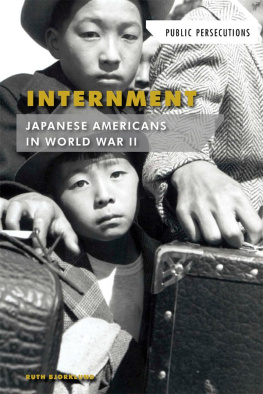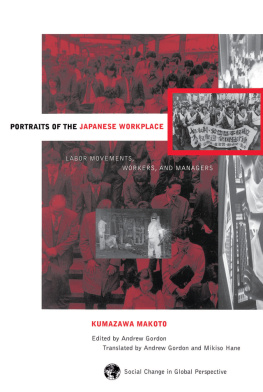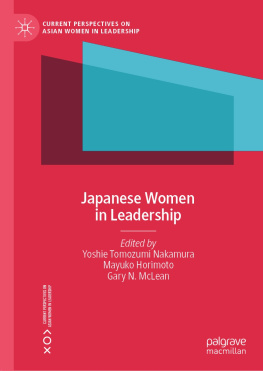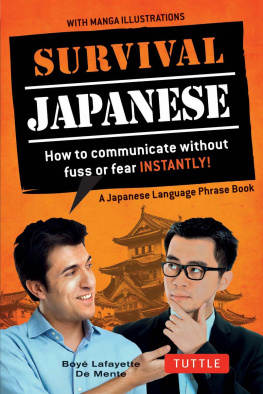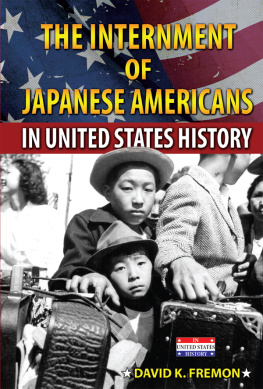Praise for With Respect to the Japanese: Going to Work in Japan
I spent 20 years in Japan, but I can honestly say that With Respect to the Japanese opened my eyes to a new and more helpful understanding of the key values and assumptions underlying the way that Japanese think and interact. This new edition has even more practical advice and insights than the first, and I trust it will enlighten the many Westerners now working with Japanese companies in the same way that it did for me.
Ted Dale, president & Chief Creative Officer, Aperian Global
A beautifully balanced insider-outsider view of Japanese culture. If the reader observes and participates in Japanese business and culture as the authors suggest, they will no doubt succeed in whatever they intend to do in Japan.
Kichiro Hayashi, PhD, professor emeritus, Aoyama Gakuin University, Tokyo, and former president of Japan Society of Multicultural Relations
Like gourmet chefs, John Condon and Tomoko Masumoto invite us to taste, smell, feel, and experience the rich, subtle, and complex aspects of the Japanese culture. Each course is brilliantly crafted and served, the rhythm flowing seamlessly between concepts, comparisons, examples, and applications. Reading this book makes me want to go to Japan... now!
Nagesh Rao, professor, Indian Institute of Management, Ahmedabad, India
A valuable book for those working in Japan for the first time, as well as for those who are in the position to teach or train newcomers to Japan... to understand what is expected at the Japanese workplace.
Eriko Machi, professor, Reitaku University and president, SIETAR Japan
The authors remarkable cross-cultural acumen shines in this practical, approachable guide to Japanese culture. Rich with illuminating examples, keen observations, and thoughtful explanations, With Respect to the Japanese is a superb handbook for Western professionals seeking to understand and appreciate the ways of their Japanese counter-parts. Indeed, this insightful book provides readers with a template for approaching any new culture with self-awareness and sensitivity.
Ming-Jer Chen, Leslie E. Grayson Professor of Business Administration, The Darden School, University of Virginia
An eloquent example of the fact that intercultural communication can have exceptional and enduring consequences.
George W. Renwick, president, Renwick and Associates
Impressive insights about cross-cultural communication. This book is highly recommended for those who do business in Japan and the global arena.
Kenichi Saito, professor, Kenichi Ohmae Graduate School of Business, former partner of McKinsey & Company, president, ForeSight & Company
WITH RESPECT TO THE
JAPANESE
GOING TO WORK IN JAPAN
Second Edition
JOHN C. CONDON AND
TOMOKO MASUMOTO

This edition first published by Intercultural Press, an imprint of Nicholas Brealey Publishing, in 2011.
|
|---|
Hachette Book Group | Carmelite House |
53 State Street | 50 Victoria Embankment |
Boston, MA 02109, USA | London EC4Y ODZ |
Tel: (617) 523-3801 | Tel: 020 3122 6000 |
www.interculturalpress.com | www.nicholasbrealey.com |
2011 by John C. Condon and Tomoko Masumoto
All rights reserved. No part of this publication may be reproduced in any manner whatsoever without written permission from the publisher, except in the case of brief quotations embodied in critical articles or reviews.
ISBN: 978-0-98424-711-0
Library of Congress Cataloging-in-Publication Data
Condon, John C.
With respect to the Japanese : going to work in Japan / John Condon and Tomoko Masumoto. 2nd ed.
p. cm.
ISBN 978-1-47364-523-3
1. National characteristics, Japanese. 2. JapanCivilization. 3. Intercultural communicationJapan. 4. Business communication Japan. I. Masumoto, Tomoko. II. Title.
DS821.C633 2010
303.48252073dc22
2010038240
For Zac
CONTENTS

FOREWORD

When an earlier edition of this book was published in 1984, it quickly became a bible for Westerners seeking to understand and deal effectively with Japan, then considered the most competitive economy in the world. Now, nearly thirty years later, John C. Condonwith the collaboration of Tomoko Masumotohas revised, updated, and expanded the classic book, this time aimed especially at Westerners who work in Japanese organizations.
Much in the world has changed since 1984. The fall of the Berlin Wall in 1989, the collapse of the Soviet Union in 1991, and the rise of the BRIC (Brazil, Russia, India, and China) economies have all contributed to the rapid globalization we are all witnessing. In the United States, few in the 1980s would have predicted the Internet boom and bust of the 1990s, the devastation of September 11, 2001, or the election of the nations first African American president in 2008. Japan usually considered a conservative and slowly changing societysaw the bursting of its real estate bubble in the early 1990s, the ensuing lost decade of economic stagnation, and, in 2009, a regime changethe election into office of the first genuine non-Liberal Democratic Party government in fifty-four years, seen by many as the most significant political event in postwar Japanese history.
Despite these momentous changes, continuities remain. The U.S. retains its position as the worlds superpower, Japan remains a center of high technology and the worlds second-largest economy measured in GDP, and the two countries are still close allies and partners. And, as was the case in the 1980s, the deeply rooted cultural differences between Japan and the U.S. (and the West) continue to impede communication, understanding, and cooperation, whether on the level of individuals, corporations, nonprofits, or governments.
That is why this book is so important. It provides an excellent guide for those who wish to understand differences between Japan and the West, and how to deal with them so that communication, collaboration, and cooperation can be improved. While reading this book, I found myself repeatedly nodding in agreement with the points being made, based on my lifetime of observing and participating in Japans interactions with the West. Let me cite a few examples:
1. Honne and tatemae. The discussion in of 16 different ways to say no reminded me that this is one of the most fundamental sources of miscommunication and misunderstanding between Westerners and Japanese. The Anglo-American tradition of individualism, empiricism, and debate naturally leads many Westerners to want to focus on the facts, nothing but the facts. The Japanese tradition of preserving group harmony and eschewing public confrontation and debate often leads to avoid saying no or to agree in principle but not necessarily on the specifics. This is a constant source of misunderstanding and even mistrust, when the Westerner later realizes that what he or she thought was a yes turned out to be merely a face-saving way to say no. In a best-selling book published in 1989, a well-known Dutch journalist even went so far as to define
Next page



